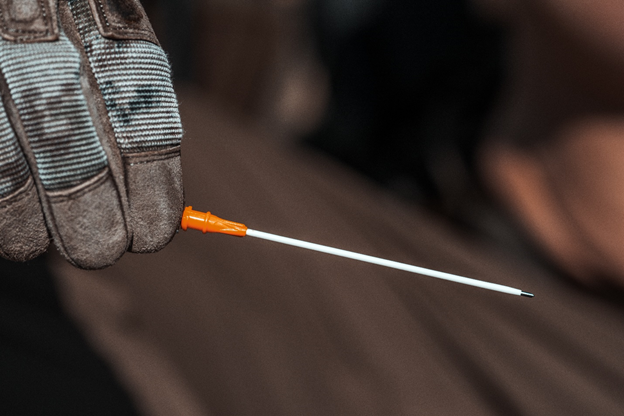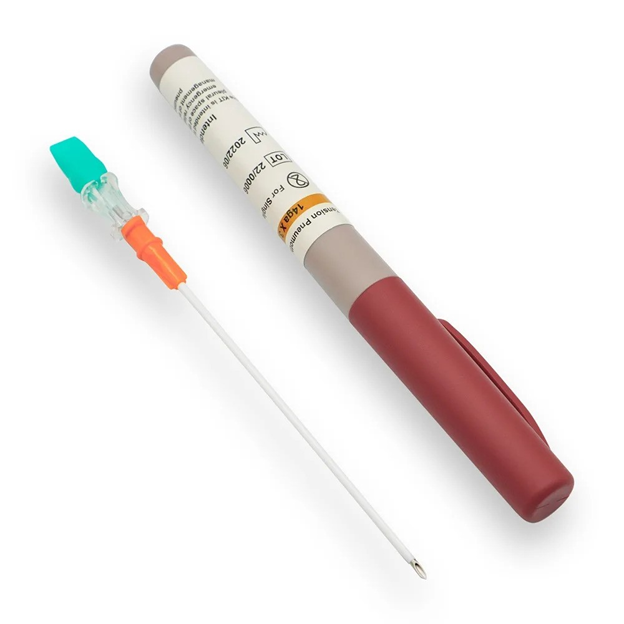Exploring the Science Behind Chest Decompression Needles

Chest decompression needles are a crucial tool in emergency medical situations, particularly for paramedics and other first responders. When faced with a tension pneumothorax or other life-threatening conditions that cause air to accumulate in the chest cavity, these needles can be the difference between life and death. The ability to quickly and effectively decompress a patient’s chest can relieve pressure on the heart and lungs, allowing for improved circulation and oxygenation.
In high-stress environments such as an EMS run, having the skills and tools necessary to perform chest decompression can make all the difference. Paramedics trained in using chest decompression needles are better equipped to handle critical situations efficiently, potentially saving lives in the process. Medical professionals need to stay up-to-date on best practices and techniques when it comes to utilizing these life-saving devices during emergencies.
Anatomy of the chest cavity
The chest cavity, also known as the thoracic cavity, is a vital space that houses the heart and lungs, providing protection and support for these crucial organs. Understanding the intricacies of its anatomy is essential for medical professionals, especially in emergencies where quick interventions can mean the difference between life and death. The chest cavity is bordered by the rib cage and contains various structures such as the pleura, mediastinum, and diaphragm.
One of the most critical interventions in emergency medical care involving the chest cavity is the use of chest decompression needles. These needles are designed to rapidly release pressure caused by conditions like tension pneumothorax, allowing trapped air to escape from the pleural space. Knowing how to properly insert these needles in clinical settings like EMS-run medical scenarios is crucial for ensuring successful outcomes for patients experiencing respiratory distress. Mastering this technique requires a deep understanding of not only anatomy but also precision and quick decision-making under pressure.
Mechanism of action of decompression needles
Decompression needles play a vital role in emergency medicine since medical professionals should learn the internal work of these implements through and through to reduce the number of deaths while saving lives in severe cases. This life-saving equipment works by carving out a pathway for the air in the heart and power or release area to escape from the chest cavity, thus freeing tension pneumothorax and restoring normal lung machine operation. The needle which is sharp in its tip would gently go through the chest wall with the air from the lung to exit and prevent the rupture of the lung or the detachment of any other vital organs.
A unique feature of a decompression needle is that it can quickly ease symptoms and it can significantly transform the outcome of trauma situations during the EMS operation. Tiny as the needles seem, their pinpoint precision helps them act fast and effectively. This emphasizes the utility and presence of these devices in the toolboxes of emergency medical responders. Knowing the reasons and mechanisms behind how domes and decompression needles work, an EMS practitioner will have an improved level of competency and skills when treating chest trauma cases in this way.

Types of decompression needles
When it comes to chest decompression needles, there are several types that EMS professionals rely on for life-saving interventions. The most repetitive version is the ordinary needle having a sharp, hollow tube needle with a syringe attached for an easy snaring of it in the chest cavity. A key contribution to thoracic disease diagnostics is the swimming catheter needle, which is specially designed for draining fluids or air from the pleural cavity. For patients with more complicated conditions, the angiocatheter needle is a highly useful device, longer and stronger, and helps the doctor to reach and insert a catheter deeper into the thorax.
Traditional needles are effective in most cases, yet new modernization with spring-loaded fast-deploying needles provides quicker and safer performance during emergencies. This kind of needle is made to self-deploy on striking the chest wall which minimizes human blunder risk and thus applies timely therapy. In emergency cases, particularly those that involve limited time frames, having these state-of-the-art decompression knives usually means a world of difference when time is of great essence during critical conditions.
Indications for chest needle decompression
Being capable of chest needle decompression is one of the most significant things we, as EMS workers, especially should be able to understand in emergencies. This is illustrated by tension pneumothorax, a condition known to be potentially life-threatening, that occurs when air is trapped between the chest and the lung due to compression which causes serious obstruction of oxygen exchange. When the tension is seriously damaging the lungs, the situation will be improved immensely by inserting the chest tube all of a sudden to reduce the pressure and protect the deterioration of the lungs.
Moreover, chest needle decompression of trauma patients with anticipated chest injuries is one of the therapeutic radiological procedures that help in providing first aid. Very early detection of a flail chest or severe rib fractures may initiate the treatment decision-making process involving the possibility of intubation to stabilize the patient’s condition and enhance respiratory function. This intervention underlines what role the EMS providers play in delivering immediate and high-quality care in such demanding conditions. The decisiveness while rapidly identifying and acting on these indications stands to make noticeable progress in the outcome of patients in treatment during emergency medical operations.
Complications and risks associated with the procedure
The application of decompression needles on the chest as emergency medicine is an acute procedure with just that possibility to save lives in extremely risky situations. Nevertheless, this technique is like any medical procedure that entails peculiar issues and hazards that healthcare experts must always consider. Safety is a key concern related to robotic chest surgery. The accuracy and precision of the tool are critical to avoid accidental insertion into the wrong place resulting in damage to vital organs like the heart and lungs. This implies that specialization and proficiency is needed before performing this procedure because the treatment is risky.
Besides incorrect positioning, other problems associated with chest decompression needles comprise infection at the entry site and in some cases, bleeding of people with already underlying blood clotting disorders. These risks justify the implementation of stricter sterile techniques during needle insertion and continuous monitoring for patient’s post-procedure to detect signs of the infection or as a result of hemorrhage.
Advancements in chest decompression technology
Along with other changes in the world of EMS technology, a new chest decompression approach shows us the beginning of advancements for saving patients Innovations in chest decompression hardware quickly transformed the whole approach towards emergency medical care, granting paramedics exact tools for prompt deployment and treatment of tension pneumothorax and other emergent conditions. On occasions requiring decompression with the use of the EMSRUN Medical Chest Decompression Needle, paramedics have the opportunity to use precise tools that help obtain a rapid result in life-threatening situations.
Current chest decompression needles could be upgraded with some specialized materials and innovative features to suit them in catastrophic events. With this optimization and assurance of safe operation, such tools are placed into EMS professionals’ hand mechanisms that, combined with their confidence, allow them to deliver efficient care with a better sense of control. As technology is advancing at an accelerated rate, it is possible that shortly, better-tailored solutions will be invented that will contribute to the improvement of the quality of services already offered by providers like EMSRUN and world-leading medical equipment manufacturers.
For more info about the product contact info@emsrun.com
